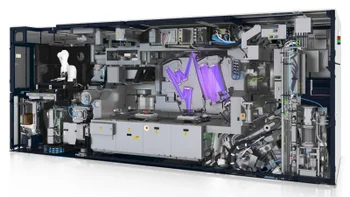Can you guess where an ex-ASML employee, accused of stealing chip-making IP, ended up? (not jail)

Here is a report that is bound to aggravate officials and lawmakers in the U.S., especially in light of the controversy over the 7nm Huawei Kirin 9000s 5G chip used to power the recently released Huawei Mate 60 line. Still unsure how or even if SMIC, China's largest foundry, was able to produce such a chipset with the current U.S. sanctions against Huawei specifically and China in general, a concerning story was published by Dutch newspaper NRC.
Keep in mind that Dutch manufacturer ASML is the only company in the world that sells the extreme ultraviolet lithography (EUV) machine that etches circuity patterns thinner than a human hair on a silicon wafer. These patterns must be extremely thin to position the billions of transistors that are placed inside a single chip. For example, each A17 Pro chip that powers an iPhone 15 Pro series model carries 19 billion transistors.
Dutch and U.S. regulations prevent ASML from selling this equipment to Chinese companies. However, citing the aforementioned story seen in NRC, Bloomberg reports that a former ASML employee, whom the company had previously charged with stealing internal data about its machines, allegedly left ASML to find employment at Huawei. The employee was said to have left ASML abruptly, adding to the suspicious nature of his actions. It isn't known whether this person currently is still employed by Huawei.
It is believed that the employee left ASML in 2022 as the company's annual report for that year mentions that it was the victim of what it called "unauthorized embezzlement." However, ASML CEO Peter Wennink downplayed the IP that was stolen as he said it was limited and was "one piece of a puzzle you don't have the box for." The executive says that ASML has tightened up its security and a similar theft can not happen again.
Per Tom's Hardware, a previous report by Bloomberg back in February revealed that an ex-ASML employee had stolen information related to ASML's chip-making tools although it wasn't known at the time that the perpetrator had ended up working for Huawei.
Late last year, Huawei reportedly filed for a patent covering some components used for an EUV machine and the process of using the machine. No further information about this patent application has been released. Additionally, Canon just announced that it has produced a system using nanoimprint lithography (NIL) technology that will help foundries produce 5nm chips and with some improvements, help manufacture 2nm chips.
So overall there is great unease among U.S. officials as Huawei was able to release a 5G phone for the first time since 2020's Mate 40 line. While ASML's CEO says that the amount of information stolen by the employee would not be enough to help Huawei produce the Kirin 9000s, Huawei itself is planning for next year's P70 and Mate 70 flagship lines.














Things that are NOT allowed: